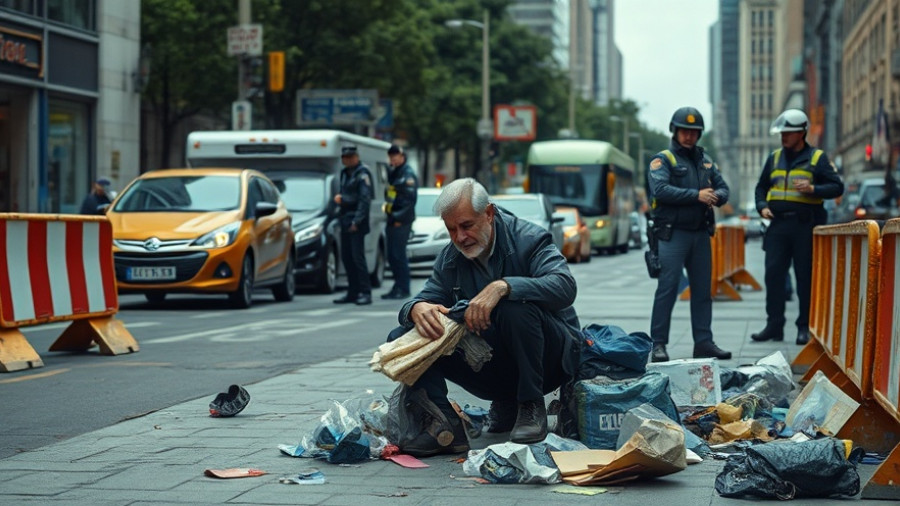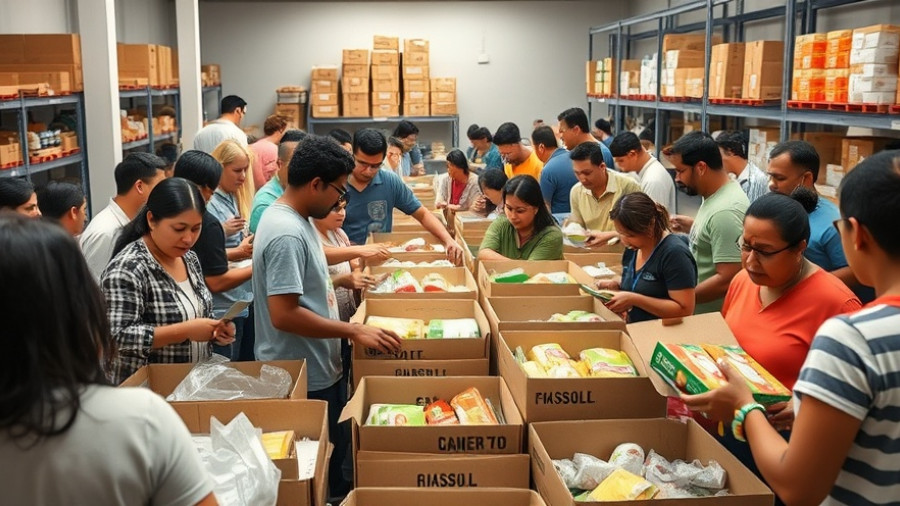
The Rising Tide of Immigration Raids: A Community Alert
In recent weeks, the streets of Chinatown have shifted from a place of community to a heightened arena of concern amidst news of immigration raids. For months, activists like Jose Ng from the Chinese for Affirmative Action have been preparing the community for the possibility of U.S. Immigration and Customs Enforcement (ICE) actions. Previous events felt like a distanced threat, mere policy discussions. However, recent events have cemented fears, making the threat of federal raids an active and immediate reality.
Unsettling Developments Spark Community Preparedness
The calm in Chinatown was shattered as graphic footage of ICE raids in New York's Chinatown echoed through social media channels. This increase in visibility served as a grim reminder that what was once considered predominantly a distant issue was now on their doorstep. The San Francisco Bay Area witnessed over 100 federal agents dispatched after these surges, increasing the stress levels in a neighborhood already grappling with the aftershocks of the COVID-19 pandemic.
"My phone has been blowing up lately," Ng recounted, noting a spike in inquiries from community partners on how to address these concerns. Most notably, he pointed out that this moment could be interpreted as a wake-up call. Local businesses, heavily impacted by previous economic downturns, fear this renewed anxiety could threaten the fragile gains made. Community leaders like Donald Luu, president of the San Francisco Chinese Chamber of Commerce, have taken proactive steps to coordinate efforts in case federal agents do ramp up their presence.
Personal Experiences and Community Reactions
Residents have begun to share stories of their evolving behavior in light of these events. Joyce Lam, political director at the Chinese Progressive Association, disclosed that more community members now carry their green cards when they leave home, highlighting a climate of fear and paranoia that extends even to U.S. citizens and permanent residents. This shift mirrors sentiments expressed in response to a recent federal operation in New York City, where community members expressed anger and fear regarding their safety and dignity.
The scenes unfolded in New York City paint a grim picture. Murad Awawdeh from the New York Immigration Coalition condemned the actions of ICE, describing them as "horrifying" and an act of terror against peaceful vendors and families trying to coexist and thrive within their community. His indictment of the federal approach emphasizes the disruptive nature of these raids, demonstrating how they violate the sanctity of local communal life.
The Interplay of Fear and Silence
Despite high levels of distress, immigration status is often shrouded in secrecy, complicating matters further. In many cases, individuals feel discouraged from discussing their fears, instead opting to hide their experiences under the proverbial rug. Ng’s comments reflect the complex emotions tied to immigration status, where one’s legality can change overnight based on numerous uncontrollable factors. This atmosphere of fear not only isolates individuals but often leads them to miss critical resources and support available to them.
This highlights a significant dilemma facing the Asian and Pacific Islander communities: a strong need for updated, accurate information about their legal rights in conjunction with the shifting tides of federal enforcement. To alleviate tensions, various groups are now offering multilingual resources and training sessions that empower residents. After all, as Lam articulated, knowing what to do when faced with a potential raid fosters a sense of control and community resilience.
Seeking Solutions: What Comes Next?
The recent developments signify a pivotal moment for not only the Chinatown community but also immigrant communities nationwide. Local organizations have proactively set the stage for future cooperation, ensuring their members are kept informed. The swift designs for coordinated actions suggest a community unwilling to succumb to fear without resistance. Trump's last-minute cancellation of increased federal operations initiated a sigh of relief among residents; however, the lingering threat remains palpable. It has pushed the community to mobilize and safeguard their interests more than ever.
In the face of adversity, there emerges a silver lining: a galvanized effort towards community solidarity and awareness that could enrich dialogue and collective response mechanisms. As Jose Ng confidently stated, the community will not let fear dictate their actions. Instead, they plan to rise against unjust operations and support each other through these challenging times.
 Add Row
Add Row  Add
Add 




Write A Comment